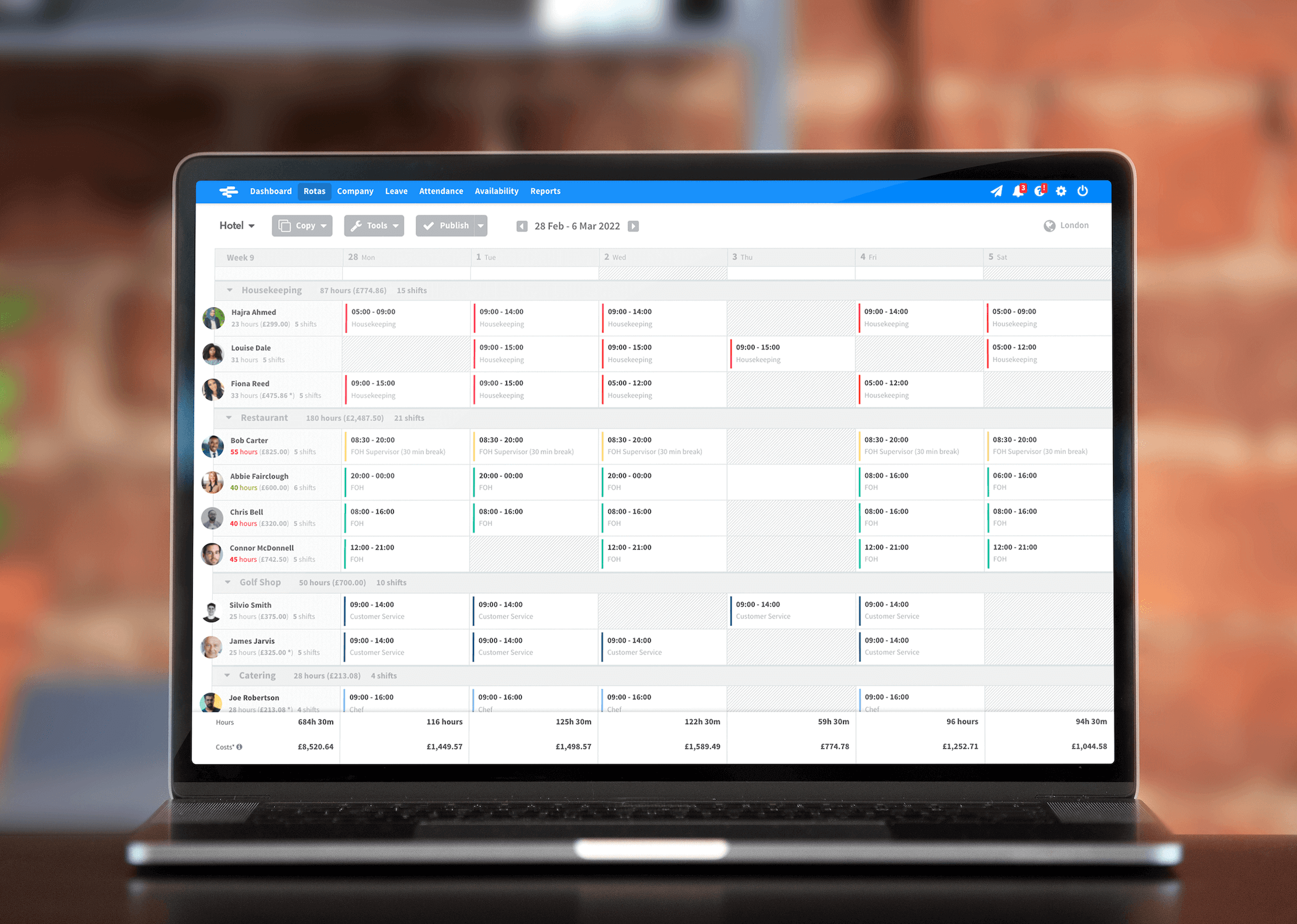If your staff work to a rota, how much notice do you give them of their upcoming shifts?
A week? A few days? Or is the work rota usually posted the night before it's needed?
Whether you produce a new rota every week, every month, or use a rolling rota in this blog we'll discuss the amount of notice you should give your staff of their shifts, as well as why it's in your business' best interests to share the rota early.
How many days in advance do work schedules need to be posted?
You should aim to publish the rota at least two weeks in advance of when your staff need it, wherever possible.
There are exceptions, of course. Some businesses — for example, restaurants or hotels, where the type and number of advance bookings can change dramatically in the space of a week — often have to adjust their staffing levels in order to avoid over- or understaffing, and may not be able to plan quite that far ahead.
But publishing the work schedule 14 days in advance has a number of advantages for the majority of businesses...
Benefits of publishing the staff rota two weeks in advance
We get it: you need as much time as you can get to build a schedule that works for everyone, so two weeks might seem like a stretch.
But by holding onto your rota until right before it's needed, you could actually be making much more work for yourself — and in some cases negatively impacting your business.
Posting the rota 14 days in advance brings with it a variety of benefits:
- More time to make changes. By sharing your rota two weeks early, you’ll have adequate time to deal with any unforeseen problems that might crop up (did you forget about that day off your promised your team leader?), or handle any last-minute shift swap requests from staff.
- Reduced staff absence. Employees who receive their upcoming schedule in advance will be less likely to pull a sickie or show up late for any shifts that might be inconvenient for them.
- A better employee experience. Staff who are given advance notice of their shifts also tend to feel more valued and respected as employees. This means they'll be more likely to stick around, so you'll spend less time — and money — on recruitment and training.
- A positive example for staff. Releasing your rotas consistently early presents the image of an employer who is proactive, organised, and can be relied on — exactly what you'd expect from your staff.
Why two weeks is the sweet spot for sharing rotas
If sharing the rota early is in everyone's best interests, then why not publish it even earlier?
The short answer is, while more notice is usually better, by sending your rota out more than two weeks in advance, you also increase the chances of having to revise it due to unforeseen problems, sudden bookings, or changes in your staff's personal circumstances.
This brings with it a whole new set of problems, since each time you update the rota you'll have to communicate changes to your team — or else risk staff showing up for shifts that have since been cancelled or whose start times have been changed.
By giving your staff two weeks' notice of their shifts, they'll have plenty of time to plan their personal lives around their work, but it's not so far in advance that you risk having to completely rewrite your schedule.

What day of the week should you publish the staff rota?
For most businesses, it doesn't really matter which day of the week you post the staff rota, just so long as you a) share it well enough in advance, and b) are consistent about when and how you publish it.
Your staff will benefit greatly from knowing which day (or by which date) they'll receive their rota, since it will allow them to make plans — and to give their friends and family an idea of when they'll know if they're free.
Staff should also know exactly how the rota will be shared, whether it's (from best to worst) via a dedicated staff rota app, WhatsApp or email, or simply pinned to the staff room wall.
As the rota manager, be sure to pick a day for distributing your staff rota, and try to stick to it no matter what.
Are there laws about how far in advance rotas need to be posted?
In the UK, there are currently no laws dictating how far in advance staff rotas must be published.
Elsewhere, however, things are beginning to change...
In some parts of the US, for example, predictive scheduling laws dictate that employees must receive their rota a set number of days before they’re due to work.
Employers are also required to financially compensate any staff whose shifts are cancelled or changed outside of an agreed notice period, due to the inconvenience (and potential financial difficulty) this might cause them.
It quite literally pays to send your rotas out early!
Wrap-up
Planning staff rotas isn’t always easy — managers have a lot to consider when deciding where and when they’ll need their staff on any given day.
But hanging onto your employees’ rotas until the last possible moment is likely to cause problems further down the line, creating more stress and work for you in the long-run and potentially even resulting in staff handing in their notice due to the frustrations that late rotas can cause.
Aim to send out your rotas two weeks (14 days) in advance of staff's upcoming shifts. This will give you more opportunity to make necessary adjustments, and will reduce the chances of staff showing up late or missing their shifts entirely.


